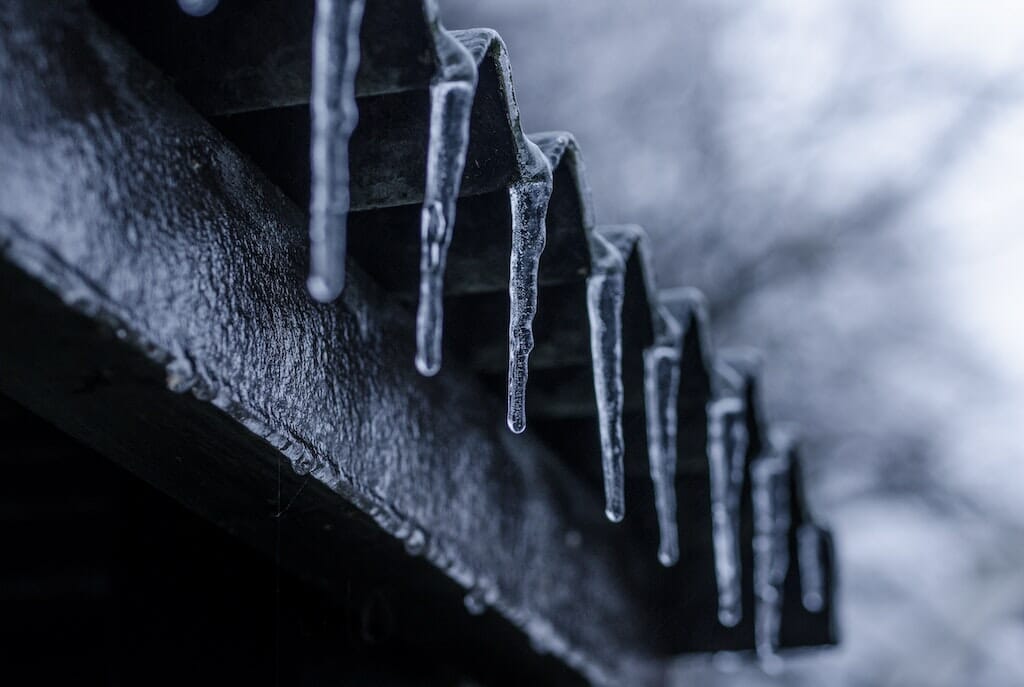Winter is almost here. And, for the commercial roofing industry, that means that we’re gearing up for winterizing maintenance and inspections—an integral piece of any long-term roofing plan. We put a great deal of focus on this time of year for a few reasons that we’ll cover in this article. But, the most important reason is that we want to keep undue stress off you and your business—especially stress that is completely preventable.
By working with your contractor to winterize and prepare your roof for ice, snow, and cold, you can extend your roof’s lifespan and keep your building safe.
5 Essential Steps to Prepare a Commercial Building for Winter Weather
1. Consider your roof’s surroundings.
If you see that your building is below tree limbs or other possible hazards, consider that winter elements like snow and ice can make those branches much heavier, causing them to fall. Your roofing contractor may recommend cutting a few of the branches, if possible, to protect your roof from the crushing blow of a broken tree limb.
2. Schedule your routine inspection.
At Maxwell Roofing & Sheet Metal, Inc., the one piece of advice that you will see in every one of our articles is to ensure that you stay up to date with your roof’s inspections and maintenance. This process will provide you and your roofing company with a good idea of the overall health of your roof and what you could do to extend its lifespan. Seemingly insignificant cracks or loose pieces can seem harmless, but they are far from it, especially as the seasons change. Your roofing contractor can spot those potential hazards and make a plan to take care of them before they snowball into future damage, or even a roof replacement.
3. Clear all leaves and debris from your roof.
In our fall checklist, you’ll see that we stress the importance of clearing leaves and debris from your roof’s gutters and drains. That is because when water can’t drain properly, it will begin to pond, especially on a flat roof. Standing water like this is already quite heavy—five pounds per square foot when the water is only standing one inch—and can easily freeze during the winter. Water can get into cracks and crevices of your roof’s membrane and freeze as well, expanding these areas and causing leaks or other damage. Additionally, wet leaves and debris can freeze into large blockages that create further drainage issues all winter long. It is much easier, and more efficient, to clear your gutters and drains on a set maintenance schedule so that you aren’t faced with avoidable damage.
4. Discuss recommended repairs with your roofing partner.
Your roofing partner will likely recommend minor to major repairs. Discuss your options with them to determine what is best for the life of your roof and integrity of your building—as you want to protect your budget, but most importantly, you want to protect the people inside.
5. Watch for possible signs of damage.
Preventative maintenance will help protect your commercial roof in the winter. However, severe weather events, such as heavy snow or ice can damage your roof even when it’s in perfect condition. You and your team must be vigilant in taking note of any irregularities that you see, especially potential leaks. Alert your roofing contractor the moment that you see signs of roof damage to prevent further issues.
Do you need help winterizing your commercial building’s roof?
If you need help maintaining your roof throughout the winter, we can help. Don’t hesitate to contact Maxwell Roofing & Sheet Metal, Inc. today! Our team is equipped and ready to schedule your routine maintenance plan, repair damages, and uphold your building’s integrity.

